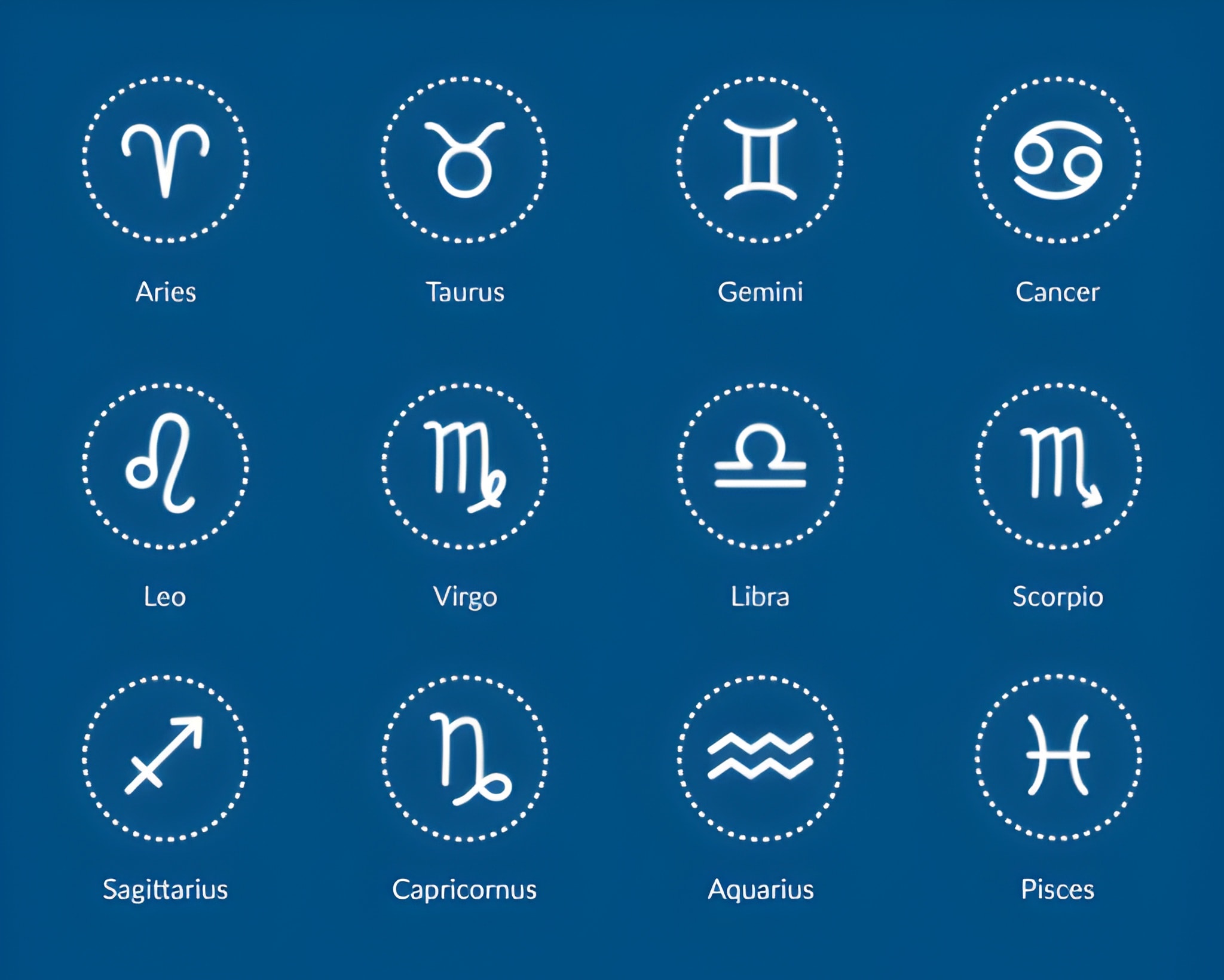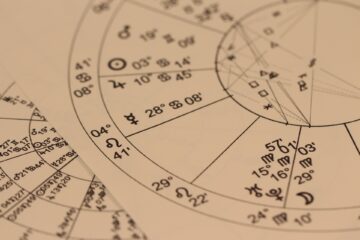Learning sequence: after houses and the nine planets, the next practical step is fluency with the twelve rāśis (signs). Signs are the stage on which planets act — they color motive, style, tempo and the way energies express in life. The types of zodiac signs in Vedic astrology tell you how the story moves.
Understanding the Types of Zodiac Signs in Vedic Astrology
Two reliable lenses structure sign behavior. First is modality — whether energy initiates, sustains or adapts. Second is element — the basic temperament (creation, consolidation, circulation, dissolution). Combine both and you read motion, not labels.
By Modality — Movable, Fixed & Dual Signs
Movable (Cardinal): Aries, Cancer, Libra, Capricorn
Action, movement and change. Strong movable placements start things, adapt quickly and dislike stagnation. Restless, reforming, often impatient to move on — excellent for beginnings, less patient with maintenance.
Fixed: Taurus, Leo, Scorpio, Aquarius
Steadiness, persistence and resistance to change. Fixed placements build, accumulate and conserve. They can be stubborn or single-minded, but they are also reliable, enduring and long-suffering when necessary.
Dual (Mutable): Gemini, Virgo, Sagittarius, Pisces
A blend of movement and stability. Flexible, curious and learning-oriented. These natives test multiple options, communicate, teach and adapt across situations; when imbalanced, they scatter attention.
By Element — Fire, Earth, Air & Water Signs
Fire: Aries, Leo, Sagittarius
Energetic, bold, assertive, pioneering. Fast metabolism, outspoken, visionary. Shadow: impulsive or combustible when under-contained.
Earth: Taurus, Virgo, Capricorn
Practical, patient, material, systems-minded. Slow-and-steady achievers who value concrete results. Shadow: over-cautious or overly literal.
Air: Gemini, Libra, Aquarius
Intellectual, social, communicative, abstract. Strong with ideas, networks and exchange of information. Shadow: detached talk without embodiment.
Water: Cancer, Scorpio, Pisces
Emotional, intuitive, inward, imaginal. Feels deeply; reflective or psychic by nature. Shadow: secrecy, overwhelm or escapism when boundaries thin.
How to Use Modality + Element Together
Learn planet significations and sign characteristics separately, then fuse them. Ask: how would this planet behave in that sign? The result is the rāśi-signature — your first clean read on expression.
Example: Mars rules both Aries (Fire, Movable) and Scorpio (Water, Fixed). In Aries, the Martian impulse is outward — quick, competitive, pioneering, visible. In Scorpio, the same energy turns inward — intense, persistent, strategic, private; it refuses to let go and can transform from the inside out.
Practice Drills
- Pick one planet and place it mentally in different signs. Note how style shifts while core meaning stays.
- Read charts in layers: modality and element first; then the ruling planet; then degrees and divisional dignity.
Sign Rulerships — The Planetary Keys
- Aries — Mars
- Taurus — Venus
- Gemini — Mercury
- Cancer — Moon
- Leo — Sun
- Virgo — Mercury (Rāhu co-rulership used by some)
- Libra — Venus
- Scorpio — Mars (Ketu co-rulership used by some)
- Sagittarius — Jupiter
- Capricorn — Saturn
- Aquarius — Saturn (Rāhu co-rulership used by some)
- Pisces — Jupiter
Important Notes — Context & Exceptions
“Any planet in Virgo never gives bad results” — true?
No. Virgo (Earth, Dual) is Mercury’s domain; some planets function comfortably there (e.g., Mercury, Saturn; Rāhu in certain approaches), while others (e.g., Mars) can be strained by enmity or task-mastering analysis. Outcomes depend on natural nature, functional role for the ascendant, aspects, degree, nakṣatra and divisional strength. Never judge from sign alone.
Is Scorpio lagna inauspicious for marriage or life?
No ascendant is inherently unlucky. Scorpio carries deep, 8th-house themes, but results pivot on lagna-lord strength, yogas and support from benefics. A strong Mars with helpful aspects stabilizes the entire frame. Use labels sparingly; charts are mixtures of potentials plus nurture and effort.
Do planets in dual signs automatically support each other?
In Jaimini rāśi aspects, dual signs do interact strongly, yet treat that as an additional lens. Degree separations, dispositors and classical lordship still steer outcomes. Use Jaimini alongside Parāśara; don’t replace one with the other.
Same planet, same sign, different house — how to add the house factor?
House answers “where,” sign answers “how,” dignity answers “how well.” Mars in Aries in the 1st is outwardly assertive and visible; the same Mars in Aries in the 4th defends family, rebuilds foundations and channels heat into home and security.
How is Bādhakeśa determined?
By modality of the ascendant: for movable lagnas the 11th lord, for fixed the 9th lord, for dual the 7th lord can function as obstacle-giver. Judge with nuance — verify strength, placement, aspects and time lords before concluding.
During Sāḍe Sātī, does Saturn’s lordship lessen difficulty?
Sāḍe Sātī amplifies Saturn’s signature. If natal Saturn is functionally benefic and well-placed, the period’s pressure becomes constructive (discipline, restructuring). If natal Saturn is weak/malefic, challenges intensify. Read dignity, aspects and daśā context.
What is “Dagdha Rāśi” and should I use it?
Dagdha is a derivative timing technique linked to calendrical factors. It can be insightful in specific predictive workflows, but you can read most nativity work excellently with modality, element, dignity and divisionals. If you explore Dagdha, test on many charts before relying on it.
Should sign rulerships be memorized exactly?
Yes. Memorize rulers first; then always ask, “What is this sign’s ruler doing in this chart?” That single habit accelerates accurate interpretation.
FAQ — Practical Chart Reading with Sign Types
How do I combine signs with houses and planets in a birth chart?
Read in three steps: (1) house = life area, (2) sign on that house = style/tempo, (3) occupant(s) + house lord = actors who express the style. Refine with dignity (own, exalted, debilitated), aspects and divisional charts for timing and strength.
Do node co-rulerships (Rāhu/Ketu) change basic sign reading?
They can add nuance (technology, collective appetite for Rāhu; severance/inner transformation for Ketu), but traditional rulers still anchor classical practice. Use co-rulerships as enrichment after testing.
If a planet sits in an element that clashes with its nature (e.g., Venus in Aries), is it “bad”?
Not automatically. It means the planet expresses its significations in that sign’s temperament — Venus in Aries seeks directly and fast. Judge benefit by functional role, dignity and support: good aspects, strong dispositors or divisionals can turn friction into productive heat.
Conclusion — From Labels to Motion
Think in movement, not nouns. Modality shows how energy moves. Element shows what that energy feels like. Together they turn memorization into recognition. Keep it simple, observe patiently, and let practical chart work train your instincts.
Ask your karma. Decode your chart at Much Needed Astro.



